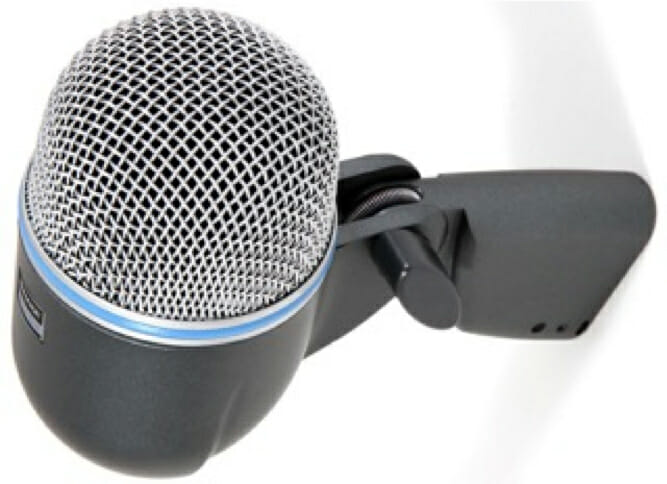Teaching last month at Backstage Academy near Wakefield, I have to admit I did something I always warn others about. I made an assumption about something without actually investigating it properly. We were looking at microphones and how they had changed over the years. I had brought along several examples of classic mics: Sennheiser 421 and 409, a Shure SM57 and 58 and the trouble-maker – the Shure B52. I wanted to show how manufacturers had begun to make more application-specific microphones.
Earlier microphones had pretty much fallen into two categories – vocal microphones and everything microphones. By this I mean microphones that were made to sing into and microphones that were just made to capture sounds in general. It was quite some time before we had microphones especially for capturing drums or bass instruments. The B52 was designed with what Shure themselves describe as a “tailored frequency response designed specifically for kick drums and other bass instruments”, providing “superb attack and “punch”, ” studio quality sound even at extremely high sound pressure levels”.
Now this is a big microphone! It is heavy, with a die cast body in metallic blue, a nice retro look, and a huge, hardened steel mesh grill. We had just finished taking apart an SM58 and a Lewett vocal mic to look at the dynamic capsules. Both were a similar size and looked remarkably alike. “Now what do you reckon this looks like inside?” I challenged the class as I unscrewed the steel mesh grill. Luckily for once I didn’t answer my own question. The students mostly figured it would be a bigger dynamic capsule to capture all that extra low end. I was actually quite surprised, once I had it open, to find that it was a capsule almost identical in size to the SM58.
Does his matter? No. It is what it sounds like that is important. We listened to all the mics in turn and what is important about the B52 is it’s ability to stand high pressure levels and also it’s polar pattern. As Shure say “The Beta 52A features a modified super-cardioid pattern throughout its frequency range to ensure high gain-before-feedback and excellent rejection of unwanted sound.” The important part here is the ‘throughout it’s frequency range”. When we talk about pick up patterns, describing a mic as cardioid, or super-cardioid, we are usually talking about an average pattern over a reduced range. A microphone may be cardioid at 1kHz but almost omni-directional at 100Hz. The success of the B52 is that it keeps its cardioid response down below 100Hz. By doing this it keeps the low end tight, restricting it to sounds entering the front of the mic. If you talk into the side you get virtually no sound. On stage this is a massive advantage as spill is minimised, especially in the low end.
The important thing is to listen to what a microphone does. How does it sound? What are its strengths? What are its weaknesses? And just because a microphone is huge doesn’t mean it’s got a big capsule!
